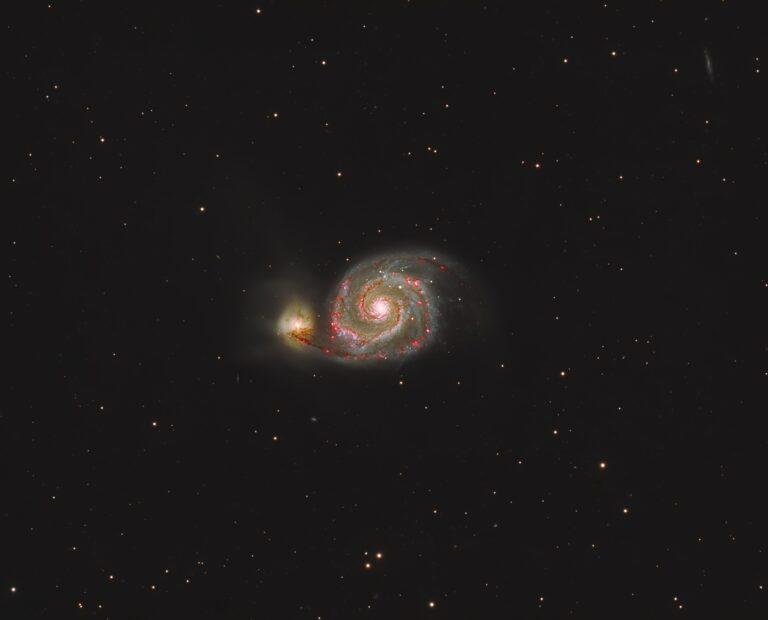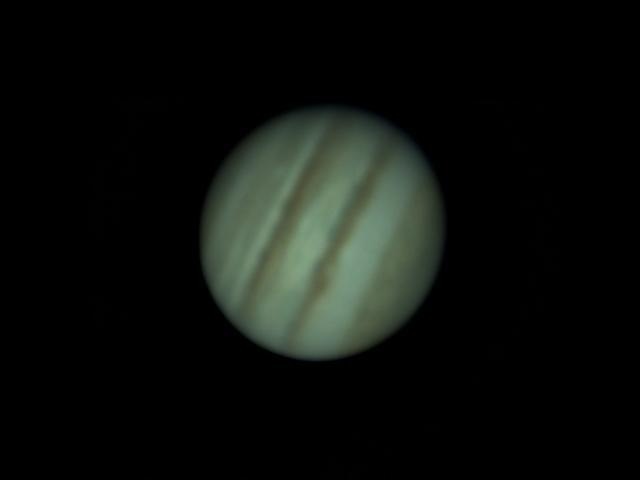M51 “The Whirlpool Galaxy”
M52 is a fabulous open star cluster in Cassiopeia. It is set against a huge amount of nebulosity that spans…
Jupiter, 7th December 2022 with C925 SCT and ASI 224MC camera I am not experienced with imaging the planets other than the Moon. This image is not going to win any prizes or keep the award winning planetary imagers awake at night! However, it’s a first effort at Jupiter and a foray in planetary imaging to give me some other astronomy options since almost always, when it is clear the moon is bright thus rendering deep sky observing and photography impossible I used my Celestron C925 telescope with a x2 Powermate (a 2″ version). I then used an ADC to try and improve colour correction and to this was connected my ASI224MC colour camera. I tried my very best to “eyeball” the focus the best I could. This is very difficult to do as Jupiter was bouncing around considerably due to quite poor seeing. Jupiter was at about 30 degrees…
Sh2-171 in Cepheus Sh2-171 is a star forming region in the constellation of Cepheus in the far northern hemisphere of the sky. Imaged here with Takahashi FSQ85 and G2-8300 with Astrodon HaRGB filters.



